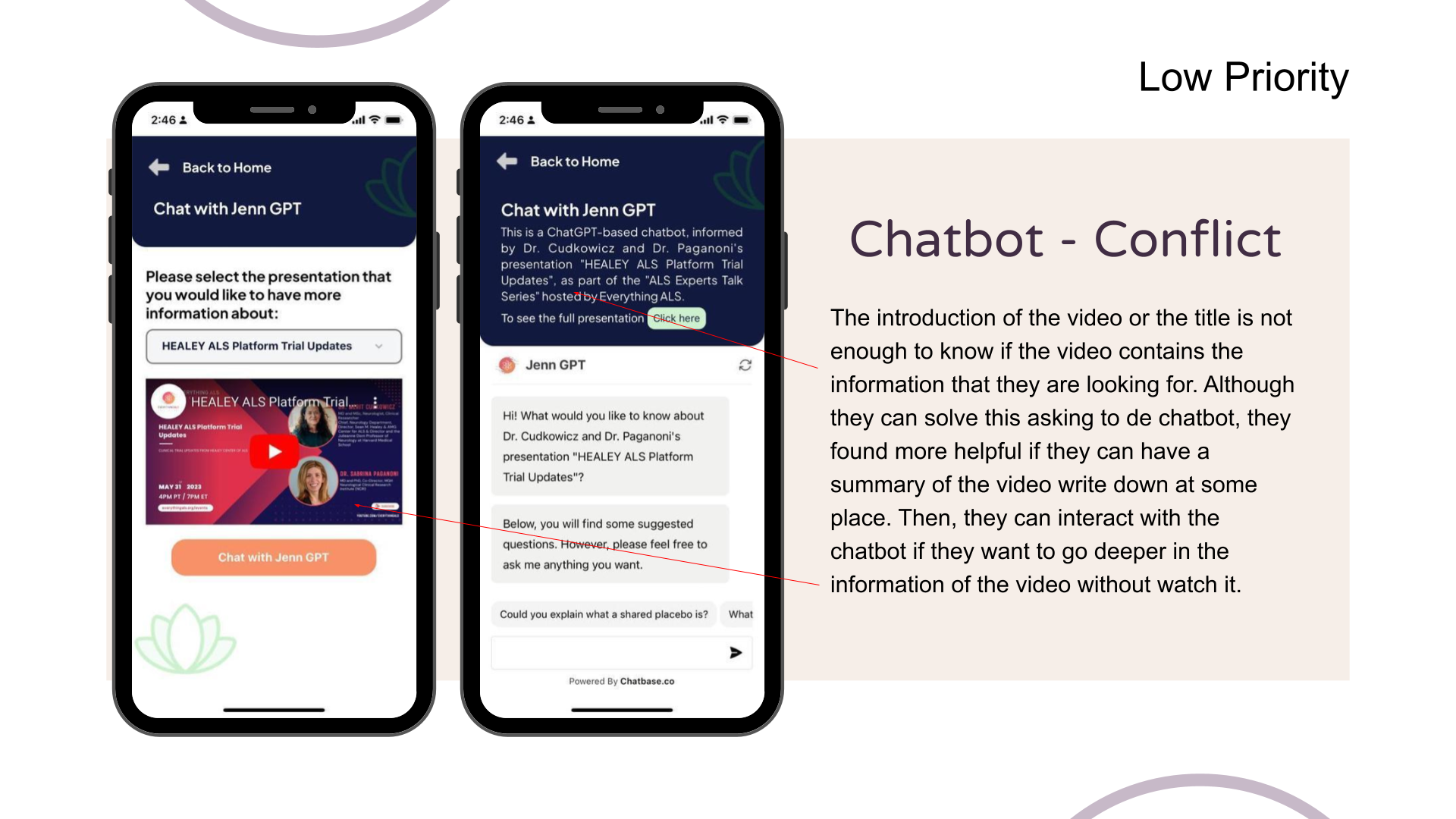Usability Testing
After Redesigned EverythingALS App
After completely redesigning the entire application and incorporating new features, I took the initiative to meticulously design and execute a comprehensive usability testing process. This was done to ensure that the user experience is not only enhanced but also consistently smooth and pleasant for all users.
The Goal
The primary goal of this usability test is to assess the accessibility, user-friendliness, and overall performance of the revamped EverythingALS app. The focus is on identifying potential issues related to navigation, interaction, readability, and visual design. The ultimate aim is to provide actionable recommendations for addressing any identified issues and to enhance the overall user experience. The test is specifically tailored for a target audience of ALS patients, aged between 40 and 75, representing diverse backgrounds and varying levels of technology knowledge.
TEAM: Developers, Project Managers and UX/UI Designer (Myself).
TIMELINE: 1 month.
The Process
In my role, I took on the responsibility of designing, conducting, and delivering the results of usability testing. Additionally, I played a crucial role in reshaping the flow of features that presented challenges following a thorough analysis of the test results. In close collaboration with the software engineering team, we ensured the seamless setup of the app in testing mode, empowering users to handle it independently. Moreover, I partnered with project managers to secure participants for the testing phase, contributing to the overall success of the project.
Participants:
10 participants (2 women, 8 men).
Age range: 40 to 75 years old.
Diverse backgrounds and technology knowledge.
Some participants may have motor challenges due to ALS.
Methodology:
Introduction and Informed Consent
We obtain and informed consent from participants and we provided an overview of the usability test.
Task Scenarios
Participants were tasked with independently setting up and testing the application.
Users were instructed to perform the following tasks:
Create an Account: Initiate the account creation process.
Explore Main Screen Features: Navigate and interact with the features showcased on the main screen.
Integrate Wearable Devices: Connect and integrate wearable devices, such as Google Fit (for Android), Health (specifically for iOS), or Fitbit.
Survey Completion: Conclude the testing process by providing feedback through a Google Form survey.
Facilitating Testing
Testing was conducted individually without assistance, with participants independently completing the Google Form and providing their feedback.
Post Test Follow-up
Following the receipt of feedback, participants were individually contacted to inquire if they had any questions and to express gratitude for their voluntary participation.
Data Analysis
I analyzed the survey responses to identify common themes and areas for improvement.
App Testing Tasks and Survey
Results
Upon receiving all the forms, I meticulously reviewed the results to analyze the information and draw conclusions. Overall, users expressed satisfaction with the new design, finding it both pleasant and colorful, and commending its user-friendly nature. The application demonstrated smooth functionality without presenting any noticeable technical issues.
However, there were two main areas that caused confusion among users:
The new section, "Daily Journal," lacked clarity regarding its purpose.
The accessibility of the new chatbot was not intuitive enough, resulting in users not finding it particularly useful.
Subsequently, I presented the findings to the entire team through a comprehensive presentation, facilitating collaborative planning for the next steps.
Creating Test Report
Background Summary
Provided a concise overview of the elements tested, the testing team, materials used, and a brief description of all findings, outlining the session's objectives.
Methodology
Detailed the procedures followed during the sessions, the tasks or scenarios tested, the metrics selected, and a brief description of each user segment.
Test Results
Summarized the results obtained, offering a comprehensive understanding of the testing outcomes.
Findings and Recommendations:
Enumerated all findings, encompassing both positive and negative aspects. Positive findings served as validation for our progress, whereas in response to negative findings, I proposed an alternative design and suggested changes to the app's flow to effectively address and resolve the identified issues. Additionally, I prioritized these recommendations based on user feedback, emphasizing the order of importance to expedite improvements in the most impactful areas.





Demos
Daily Journal Solution
Chatbot Section Solution
Prototypes
Conclusion
This usability test aimed to ensure that the EverythingALS app redesign meets the needs of its target users, especially those with ALS. The insights gained from this test contributed to refining the app's design, making it more accessible, pleasant, and intuitive for users facing motor challenges.


